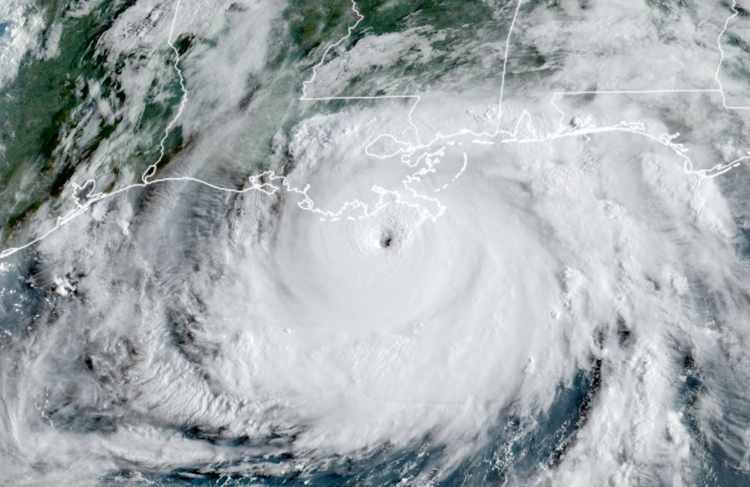New research suggests hurricane and typhoon activity may shift further towards the poles, with tropical cyclone zones expanding and as a result hurricanes and typhoons occupying a broader range of latitudes in future, all because of climate change.
 The report published in Nature Geoscience and lead authored by Joshua Studholme of Yale University, with additional author support from Sergey Gulev of the Moscow-based Shirshov Institute of Oceanology; Kerry Emanuel of the Massachusetts Institute of Technology; and Kevin Hodges of the University of Reading, warns of growing tropical cyclone threats for some of the world’s most populated regions and cities, as a result of the poleward shift in storm activity.
The report published in Nature Geoscience and lead authored by Joshua Studholme of Yale University, with additional author support from Sergey Gulev of the Moscow-based Shirshov Institute of Oceanology; Kerry Emanuel of the Massachusetts Institute of Technology; and Kevin Hodges of the University of Reading, warns of growing tropical cyclone threats for some of the world’s most populated regions and cities, as a result of the poleward shift in storm activity.
Tropical cyclones, typically known as a hurricane or typhoon, normally form in lower latitudes where access to the warm sea surface temperatures and climatic conditions necessary for tropical storm formation and intensification are most readily found.
The tropics, on either side of the equator, are the more typical home for tropical cyclones, hurricanes and typhoons, although there are plenty of storms that track outside of the tropics but retain their tropical characteristics for longer than anticipated.
But based on observations of storm activity and projections made using models, the researchers say the data indicates that tropical cyclones could “migrate poleward in response to anthropogenic greenhouse gas emissions, which poses profound risks to the planet’s most populous regions.”
As a result, they see a growing threat to mid-latitude regions, which include some of the world’s most populated cities that are on the coast, such as New York, Beijing, Boston and Tokyo.
The study suggests that by the end of this century, tropical cyclone activity will be seen across a wider range of latitudes than they have been for some 3 million years.
Climate change is seen as a factor that can induce changes in the troposphere and jet stream, making tropical cyclone storm tracks more likely to be seen at higher latitudes, the researchers believe.
They cite storms like 2021’s hurricane Henri, which affected higher latitudes, as well as 2020’s subtropical storm Alpha, which was the first tropical cyclone observed to make landfall in Portugal, as potential examples of future activity.
The researchers note the lack of agreement in scientific circles over how climate change and greenhouse gas emissions could affect major storms and hurricanes, but conclude that as the planet warms we are likely to see more tropical cyclone activity at higher latitudes.
They also suggest that storms at higher latitudes may also move more slowly and potentially hold more moisture and cause more rainfall as a result.
While there remains significant debate over if or how climate change could affect storm frequency and severity, the researchers believe there are numerous pieces of evidence to suggest this poleward shift and more tropical cyclone activity is likely to occur at higher latitudes.
How climate change affects natural catastrophe events such as hurricanes and typhoons remains uncertain, meaning that what is key is having an understanding of the latest available research and how our future climate could elevate threats around the world, as well as what the ramifications of that could be for insurance and reinsurance markets.
An expanding tropical cyclone zone, with more storm activity expected at mid-latitudes, has ramifications for how insurance companies protect themselves, with more reinsurance perhaps required, and would also suggest shifts in exposure for instruments such as insurance-linked securities (ILS).
At the moment, while catastrophe bonds often cover the entire US eastern seaboard up to Boston and sometimes beyond, the contribution to expected losses is typically concentrated around the south-east and Gulf states.
If hurricane activity does shift northwards more frequently, it would be natural to assume that the expected loss contribution of northeastern states in catastrophe bonds would increase as well, affecting diversification for ILS portfolios and likely stimulating more reinsurance buying.
The researchers state, “We conclude that twenty-first century TCs will most probably occupy a broader range of latitudes than those of the past 3 million years as low-latitude genesis will be supplemented with increasing mid-latitude TC favourability, although precise estimates for future migration remain beyond current methodologies.”
The full paper is accessible via Nature here.
 View all of our Artemis Live video interviews and subscribe to our podcast.
View all of our Artemis Live video interviews and subscribe to our podcast.
All of our Artemis Live insurance-linked securities (ILS), catastrophe bonds and reinsurance video content and video interviews can be accessed online.
Our Artemis Live podcast can be subscribed to using the typical podcast services providers, including Apple, Google, Spotify and more.































